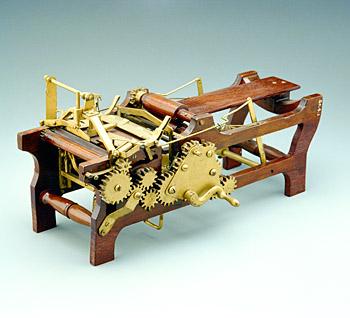
The current exhibition, The Great American Hall of Wonders celebrates the 19th-century American spirit of ingenuity through the examination of art, science, and invention. It was a great time to be a scientist, unless, of course, you were a woman (with the field of astronomy being the exception, thanks in part to astronomer Maria Mitchell and the comet she discovered in 1847), a newly arrived immigrant, or a person of color recently granted freedom. Though kept out of the network of scientists and explorers, these disenfranchised managed to find themselves inventors applying for patents. As exhibition curator, Claire Perry, describes in her accompanying catalogue, "Because patent application forms usually did not require applicants to list their gender, race, or country of origin, the patent system was open to an egalitarian community of tinkerers."
In 1834, Henry Blair, a free black man from Maryland, applied for and was awarded a patent for a seed planter, an invention that would make life easier for those laboring on farms. With Blair's machine, the work could end before dark and not continue through the late hours of the evening.
Margaret Knight (1838-1914), whose patent model is pictured here, Patent Model of Machine for Making Paper Bags, was the holder of twenty-six patents, mostly having to do with paper bags, shoes, and rotary engines. This one for which she was awarded patent number 220925, was used for the folding and gluing of paper bags. Her first patented invention, inspired by her work at a Springfield, Massachusetts paper company, was her machine for improvement in paper-feeding; it was given patent number 109224 in 1870.
The exhibition, The Great American Hall of Wonders closes on January 8, 2012.


















